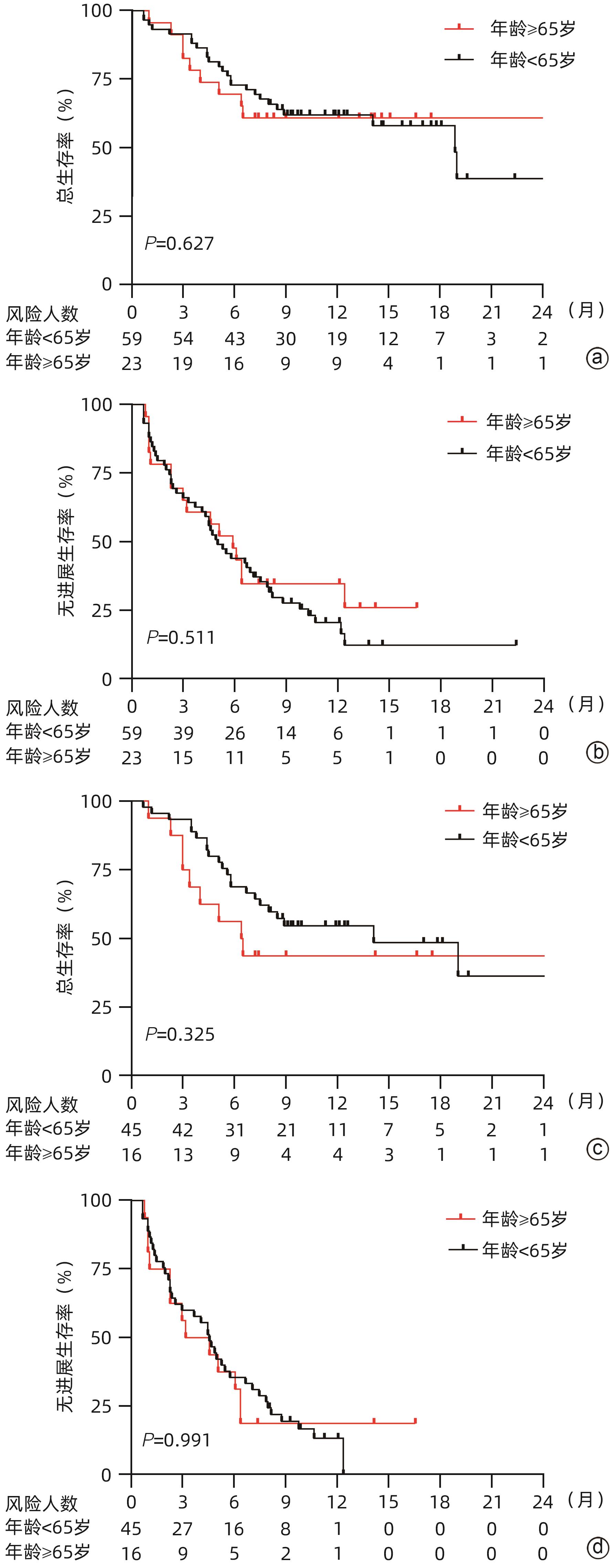| [1] |
YANG JD, HAINAUT P, GORES GJ, et al. A global view of hepatocellular carcinoma: Trends, risk, prevention and management[J]. Nat Rev Gastroenterol Hepatol, 2019, 16( 10): 589- 604. DOI: 10.1038/s41575-019-0186-y. |
| [2] |
RUMGAY H, ARNOLD M, FERLAY J, et al. Global burden of primary liver cancer in 2020 and predictions to 2040[J]. J Hepatol, 2022, 77( 6): 1598- 1606. DOI: 10.1016/j.jhep.2022.08.021. |
| [3] |
SMITH BD, SMITH GL, HURRIA A, et al. Future of cancer incidence in the United States: Burdens upon an aging, changing nation[J]. J Clin Oncol, 2009, 27( 17): 2758- 2765. DOI: 10.1200/JCO.2008.20.8983. |
| [4] |
LLOVET JM, KELLEY RK, VILLANUEVA A, et al. Hepatocellular carcinoma[J]. Nat Rev Dis Primers, 2021, 7: 6. DOI: 10.1038/s41572-020-00240-3. |
| [5] |
LIU JH, CHEN ZC, LI YQ, et al. PD-1/PD-L1 checkpoint inhibitors in tumor immunotherapy[J]. Front Pharmacol, 2021, 12: 731798. DOI: 10.3389/fphar.2021.731798. |
| [6] |
RAO Q, LI M, XU W, et al. Clinical benefits of PD-1/PD-L1 inhibitors in advanced hepatocellular carcinoma: A systematic review and meta-analysis[J]. Hepatol Int, 2020, 14( 5): 765- 775. DOI: 10.1007/s12072-020-10064-8. |
| [7] |
WANG Y, JIANG M, ZHU JJ, et al. The safety and efficacy of lenvatinib combined with immune checkpoint inhibitors therapy for advanced hepatocellular carcinoma[J]. Biomedecine Pharmacother, 2020, 132: 110797. DOI: 10.1016/j.biopha.2020.110797. |
| [8] |
FINN RS, IKEDA M, ZHU AX, et al. Phase Ib study of lenvatinib plus pembrolizumab in patients with unresectable hepatocellular carcinoma[J]. J Clin Oncol, 2020, 38( 26): 2960- 2970. DOI: 10.1200/JCO.20.00808. |
| [9] |
OMATA M, CHENG AL, KOKUDO N, et al. Asia-Pacific clinical practice guidelines on the management of hepatocellular carcinoma: A 2017 update[J]. Hepatol Int, 2017, 11( 4): 317- 370. DOI: 10.1007/s12072-017-9799-9. |
| [10] |
LI T, GUO J, LIU YS, et al. Effectiveness and tolerability of camrelizumab combined with molecular targeted therapy for patients with unresectable or advanced HCC[J]. Cancer Immunol Immunother, 2023, 72( 7): 2137- 2149. DOI: 10.1007/s00262-023-03404-8. |
| [11] |
LLOVET JM, LENCIONI R. mRECIST for HCC: Performance and novel refinements[J]. J Hepatol, 2020, 72( 2): 288- 306. DOI: 10.1016/j.jhep.2019.09.026. |
| [12] |
MEI KM, QIN SK, CHEN ZD, et al. Camrelizumab in combination with apatinib in second-line or above therapy for advanced primary liver cancer: Cohort A report in a multicenter phase Ib/II trial[J]. J Immunother Cancer, 2021, 9( 3): e002191. DOI: 10.1136/jitc-2020-002191. |
| [13] |
CAI JQ, ZHANG BL, BI XY. Comprehensive treatment strategy for hepatocellular carcinoma based on surgical treatment in the era of targeted therapy and immunotherapy[J]. Chin J Dig Surg, 2023, 22( 2): 181- 186. DOI: 10.3760/cma.j.cn115610-20221130-0071.
|
| [14] |
LI H, QIN SK, LIU Y, et al. Camrelizumab combined with FOLFOX4 regimen as first-line therapy for advanced hepatocellular carcinomas: A sub-cohort of a multicenter phase ib/II study[J]. Drug Des Devel Ther, 2021, 15: 1873- 1882. DOI: 10.2147/DDDT.S304857. |
| [15] |
YUAN GS, CHENG X, LI Q, et al. Safety and efficacy of camrelizumab combined with apatinib for advanced hepatocellular carcinoma with portal vein tumor Thrombus: A multicenter retrospective study[J]. Onco Targets Ther, 2020, 13: 12683- 12693. DOI: 10.2147/OTT.S286169. |
| [16] |
QIN SK, REN ZG, MENG ZQ, et al. Camrelizumab in patients with previously treated advanced hepatocellular carcinoma: A multicentre, open-label, parallel-group, randomised, phase 2 trial[J]. Lancet Oncol, 2020, 21( 4): 571- 580. DOI: 10.1016/S1470-2045(20)30011-5. |
| [17] |
XU JM, SHEN J, GU SZ, et al. Camrelizumab in combination with apatinib in patients with advanced hepatocellular carcinoma(RESCUE): A nonrandomized, open-label, phase II trial[J]. Clin Cancer Res, 2021, 27( 4): 1003- 1011. DOI: 10.1158/1078-0432.CCR-20-2571. |
| [18] |
VITHAYATHIL M, D’ALESSIO A, FULGENZI CAM, et al. Impact of older age in patients receiving atezolizumab and bevacizumab for hepatocellular carcinoma[J]. Liver Int, 2022, 42( 11): 2538- 2547. DOI: 10.1111/liv.15405. |
| [19] |
TADA T, KUMADA T, HIRAOKA A, et al. Safety and efficacy of atezolizumab plus bevacizumab in elderly patients with hepatocellular carcinoma: A multicenter analysis[J]. Cancer Med, 2022, 11( 20): 3796- 3808. DOI: 10.1002/cam4.4763. |
| [20] |
BORZIO M, DIONIGI E, VITALE A, et al. Management and prognosis of hepatocellular carcinoma in the elderly: Results of an in-field multicenter cohort study[J]. Liver Int, 2017, 37( 8): 1184- 1192. DOI: 10.1111/liv.13392. |
| [21] |
GUO H, WU T, LU Q, et al. Hepatocellular carcinoma in elderly: Clinical characteristics, treatments and outcomes compared with younger adults[J]. PLoS One, 2017, 12( 9): e0184160. DOI: 10.1371/journal.pone.0184160. |
| [22] |
DELIGIORGI MV, TRAFALIS DT. Reversible primary adrenal insufficiency related to anti-programmed cell-death 1 protein active immunotherapy: Insight into an unforeseen outcome of a rare immune-related adverse event[J]. Int Immunopharmacol, 2020, 89( Pt B): 107050. DOI: 10.1016/j.intimp.2020.107050. |
| [23] |
ZHANG Y, ZHANG X, LI W, et al. Biomarkers and risk factors for the early prediction of immune-related adverse events: a review[J]. Hum Vaccin Immunother, 2022, 18( 1): 2018894. DOI: 10.1080/21645515.2021.2018894. |








 DownLoad:
DownLoad:
